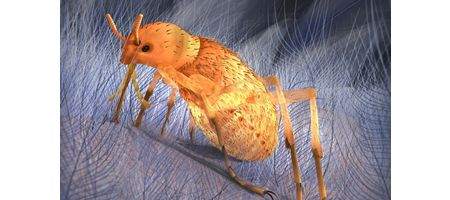Creatures like fleas – but ten times bigger – plagued the dinosaurs with their sharp jaws 165 million years ago.

Discovered by Chinese scientists in Inner Mongolia, they may be the ancestors of modern fleas, but are more likely to belong to a separate and now extinct lineage, say the Oregon State University scientists who have analyzed them.
“These were insects much larger than modern fleas and from the size of their proboscis we can tell they would have been mean,” says professor emeritus of zoology George Poinar.
“You wouldn’t talk much about the good old days if you got bit by this insect. It would have felt about like a hypodermic needle going in – a flea shot, if not a flu shot. We can be thankful our modern fleas are not nearly this big.”
Called Pseudopulex jurassicus and Pseudopulex magnus, the creatures had bodies that were flatter than those of present-day fleas, like a bedbug or tick. They had long claws that could reach over the scales on a skin dinosaur’s skin, so they could hold on tightly while sucking blood.
Modern fleas are taller and thinner, with shorter antennae, and can move quickly through the fur or feathers of their victims.
“These are really well-preserved fossils that give us another glimpse of life into the really distant past, the Cretaceous and Jurassic,” says Poinar.
There’s no real equivalent to these creatures today. All true fleas are adapted to feeding on warm-blooded vertebrates, with 94 percent of the 2,300 known species feeding on mammals, and the remainder on birds.





